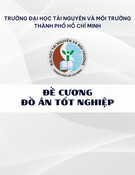
MINISTRY OF EDUCATION
AND TRAINING
MINISTRY OF AGRICULTURE
AND RURAL DEVELOPMENT
THUYLOI UNIVERSITY
NGUYEN THI THU NGA
RESEARCH ON HYDRO-ECONOMIC MODEL DEVELOPMENT FOR
OPTIMIZING WATER ALLOCATION IN BA RIVER BASIN
DISSERTATION ABSTRACT
Speciality: Hydrology
Code: 62 44 90 01
HANOI, 2017

This dissertation is completed at Thuyloi University.
Principal Advisor: Professor Ha Van Khoi
Reviewer 01: Dr. Nguyen Lan Chau
Reviewer 02: Assoc. Prof. Nguyen Tien Giang
Reviewer 03: Assoc. Prof. Ngo Le Long
This dissertation will be presented to the Evaluating Committee at
…………………………………………………………………………….
At …….. on …………….. 2017.
This dissertation could be found in the following libraries:
- National Library
- Thuyloi University Library

1
INTRODUCTION
1. Statement of the problem
Ba river basin is one of the largest inter-provincial river basins in Vietnam.
Based on the results of previous irrigation and hydropower planning, a series of
hydraulic structures had been built. In particular, there are two main irrigation
structures named Ayun Ha and Dong Cam, and five large hydropower plants
named An Khe, Kanak, Song Ba Ha, Song Hinh, and Krong Hnang. However,
when these projects went into operation, there had some impacts back to the
water resource system. As a result, the allocation of water resources over space
and time had been changed, which thereby affects the exploitation of water in
the whole basin. This is one of the causes leading to the conflicts between
irrigation and hydropower, upstream and downstream, economic development
and environment protection. Therefore, it is necessary to reconsider the issue of
water allocation in Ba river basin on the basis of coordination of existing
irrigation and hydropower structures to improve water use more efficiently.
In this context, "research on development of hydro-economic model for
optimizing water allocation in Ba river basin" is chosen to study to find out a
mathematical model supporting in water resources management in Ba river
basin. The model aims to improve water using in a more efficient way in the
field of economy, social balance, and environmental protection.
2. Research Objective
This research aims to address the difficult situation of water allocation problem
in Ba river basin by analyzing the relationship between relative water
availability and economic benefit from key-water using sectors. Four following
steps were taken to meet the research objective: establishing the water
allocation problem for Ba river basin; developing a hydro-economic model
applied for Ba river basin; applying the developed model to assess potential

2
policies regarding to water resource management; and proposing several water
resource management measures for Ba river basin.
3. Scope of study
Scope of study: Research on water allocation problem of Ba river basin, time
scale is a water year, time step is a month.
Research subjects: Water users to be considered are agriculture and
hydropower. The other water users including domestic, industry, fishery, and
environment are considered as constant constraints.
4. Methodology
The following methods applied in the research are including (i) inherited
method; (ii) synthetic analysis method; (iii) statistical method; and (iv)
nonlinear programming method;
5. New contributions
Study on applying an optimizing model in analysis, assessment, and allocation
of water resources in a river basin, and modifying the model for Ba river basin.
Establishment of the quantified relationship between water availability and
economic benefit from key-water using sectors.
Application of the model to evaluate several potential policies in water
resources planning and management. Based on the results, some management
measures are proposed to improve water use efficiency.
6. Structure of the thesis
The thesis consists of 113 pages, 30 tables, 19 figures and 72 references.
Besides the introduction and conclusion, the thesis consists of 4 chapters as
follows:
Chapter 1: Overview of hydro-economic model applications in water resources
planning and management

3
Chapter 2: Establishment of hydro-economic problem for water allocation in Ba
river basin
Chapter 3: Simulation and solve hydro-economic problem of Ba river basin in
GAMS.
Chapter 4: Impact assessment of water exploitation scenarios to socio-economic
benefits in Ba river basin.
CHƯƠNG 1 OVERVIEW OF HYDRO-ECONOMIC MODEL
APPLICATIONS IN WATER RESOURCES PLANNING AND
MANAGEMENT
1.1 Nomenclature and definitions
A hydro-economic model is the combination of a hydrology model and an
economic model, thereby it can represent hydrologic, technical, environmental,
and economic aspects of water resource system in an integrated framework
(Harou, 2009).
1.2 Introduction of hydro-economic models
In a hydro-economic model, water allocation was driven and evaluated by
economic value of water. Water is considered as a special economic good, with
the properties of both private goods and public goods. The economic value of
water varies by type of uses (consumptive uses or non-consumptive uses,
instream uses or offstream uses, uses as intermediate good or uses as final
good). Water value is also changeable over time and space. The researchers can
apply different methods to estimate the water value for certain situation. In
general, the residual method was used to estimate water value in agriculture,
producer's demand function method was used to estimate water value in
hydropower and industry, and consumer's demand function method was used to
estimate the water value in domestic uses. The hydro-economic models are
different from traditional hydrological models by taking additional
consideration of "varied" water values. The hydro-economic models are
different from economic models which usually focused on economic effects of


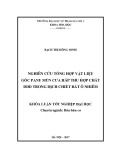
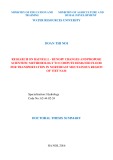
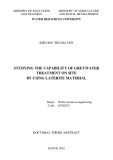

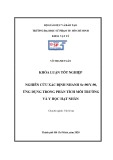


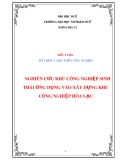

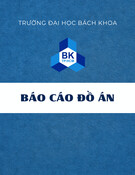
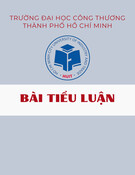
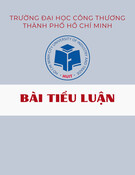
![Ô nhiễm môi trường không khí: Bài tiểu luận [Nổi bật/Chi tiết/Phân tích]](https://cdn.tailieu.vn/images/document/thumbnail/2025/20251011/kimphuong1001/135x160/76241760173495.jpg)
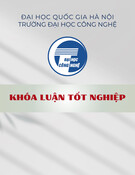





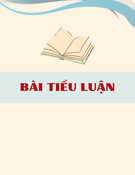
![Ứng dụng kỹ thuật trao đổi ion trong điện phân: Bài tiểu luận [chuẩn nhất]](https://cdn.tailieu.vn/images/document/thumbnail/2025/20250829/sonphamxuan1808/135x160/97341756442892.jpg)
